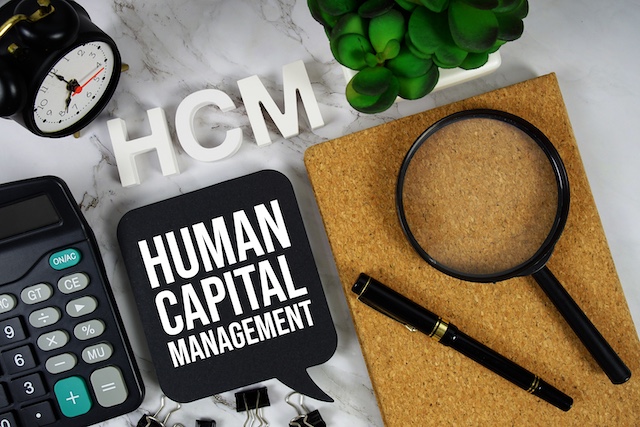High-potential employees (HIPOs) are your company’s future leaders. They’re the individuals who excel in their current roles but have the drive and ability to take on much more. They have a strong desire and insatiable taste for growth. Imagine employees consistently delivering solid results, eagerly learning new skills, and inspiring others. Those are your HIPOs.
Identifying and nurturing high-potential employees is crucial for the long-term success and sustainability of your company. These individuals represent the next generation of leaders who can drive innovation, motivate teams, and steer the company toward its strategic goals. By investing in their development through targeted training, mentorship and coaching programs, stretch assignments, and career advancement opportunities, organizations can harness the full potential of these talented individuals while fostering a culture that encourages loyalty.
Help your employees take charge of their careers. Download these tips to make career development conversations more meaningful.
Why Is it Important to Recognize High-Potential Employees at Your Company?
Recognizing high-potential employees (HIPOs) is like discovering hidden gold in your company. These individuals aren’t just valuable now but hold the key to your future success. Here’s why it’s essential to identify them and foster their growth:
1. Future leaders
Your company thrives on strong leadership. HIPOs demonstrate the qualities—initiative, strategic thinking, and the ability to inspire—that make them ideal candidates for future leadership roles. By recognizing them early, you can groom them through specialized training and mentorship programs, ensuring a smooth transition when senior positions open up.
2. Innovation engine
HIPOs are brimming with fresh ideas and a willingness to challenge the status quo. Recognizing their potential allows you to leverage their innovative spirit. You can invite them to propose new solutions and methods, keeping your company ahead of the curve.
3. Employee engagement and retention
Talented individuals crave growth, stimulation, and recognition. Acknowledging their potential sends a powerful message: “We see your talent and want to invest in you.” This investment fosters loyalty, boosts employee morale, and reduces the risk of losing your most valuable assets to competitors. In fact, according to the study by INTOO and Workplace Intelligence, “Unlocking Organizational Success by Supporting Employee Growth and Development,” 81% of employees say having access to high-quality Learning & Development programming would increase their likelihood of staying at their company.
4. Succession planning
Every company needs a plan for the future. Recognizing HIPOs allows you to build a talent pipeline proactively, increasing your organizational resilience. By understanding these employees’ strengths and aspirations, you can align their career development with future openings, ensuring a smooth handover of knowledge and expertise when senior personnel move on.
5. Competitive advantage
Companies with a strong pipeline of HIPOs are better equipped to adapt to change and seize opportunities. A proactive approach to developing future leaders ensures you have the right people to navigate challenges and capitalize on emerging trends. This agility gives you a significant edge in today’s dynamic business landscape.

10 Ways to Identify High-Potential Employees
Identifying high-potential employees is an essential part of talent management for any organization. These individuals possess the qualities and capabilities that set them apart as future leaders and contributors to the company’s success. Identifying them early allows you to invest in their development and secure your company’s future success.
Here are ten effective ways for managers and business leaders to identify high-potential employees:
1. Consistently exceeding expectations
While strong performance is a good indicator of high potential, it shouldn’t be the sole criterion. Focus on employees who regularly go beyond expectations, not just meet them. Do they take initiative and go the extra mile? Do they proactively tackle challenges and identify areas for improvement? These are signs of someone who will succeed outside of the limitations of their current role.
2. Growth mindset and learning agility
High-potential employees are never satisfied with the status quo. They possess a growth mindset, constantly seeking opportunities to learn new skills and expand their knowledge base. Observe how employees react to challenges. Do they view them as roadblocks or opportunities to learn? Look for individuals who actively seek training opportunities, readily embrace feedback, and quickly adapt to new situations.
3. Initiative and problem-solving skills
Top performers don’t wait to be told what to do. HIPOs demonstrate initiative by taking ownership of their work and proactively identifying problems. Do they anticipate challenges and propose solutions before issues arise? Can they think critically, analyze situations, and develop creative solutions? These are all hallmarks of a high-potential employee.
4. Strategic thinking and big-picture vision
Effective leaders see beyond the immediate task at hand. High-potential employees demonstrate strategic thinking by understanding how their responsibilities contribute to the company’s greater goals. Do they consider the long-term implications of their actions? Can they connect the dots and see how their work fits into the overall strategy? Look for individuals who can think strategically and contribute to long-term planning.
5. Collaboration and teamwork
Leadership isn’t a solo act. HIPOs are strong team players who value collaboration and leverage the strengths of others. Do they actively listen to colleagues, share ideas openly, and support their team members? Can they effectively communicate and build consensus within diverse groups? HIPOs understand that success is achieved through collective effort.

6. Communication skills
Effective workplace communication is paramount for any leader. HIPOs possess strong communication skills, allowing them to articulate ideas, both verbally and in writing. Can they tailor their communication style to different audiences? Do they actively listen, understand diverse perspectives, and provide constructive feedback? These communication skills are crucial for influencing and motivating others.
7. Emotional intelligence (EQ)
Leaders need a strong awareness and understanding of their own emotions and the emotions of others. Look for employees who demonstrate high EQ by effectively managing their emotions, showing empathy towards others, and gracefully navigating conflict. Can they build strong relationships, motivate colleagues, and create a positive work environment? High EQ is essential for effective leadership.
8. Resilience and adaptability
The road to success is rarely smooth. HIPOs demonstrate resilience by bouncing back from setbacks and adapting to changing circumstances. Do they view challenges as opportunities for growth? Can they remain calm under pressure and adjust their approach when needed? These qualities are essential for navigating the inevitable challenges leaders face.
9. Passion and motivation
True potential is fueled by passion. HIPOs possess a genuine enthusiasm for their work and a strong desire to make a difference. Do they display a contagious energy and excitement about their role? Are they motivated by intrinsic factors such as learning and growth rather than just external rewards? This intrinsic motivation is key for sustained success.
10. Develop a formal high-potential assessment
Don’t leave identifying HIPOs to chance. Create a structured process that outlines specific criteria and evaluation methods. This process could include performance reviews, 360-degree feedback, assessments, or psychometric testing. A formal procedure ensures consistency and objectivity in identifying future leaders.
What opportunities are valued by employees almost as much as a promotion or pay raise? Read the report to find out.
Start Recognizing High-Potential Employees Today
Identifying and developing HIPOs is an ongoing process. Implementing the strategies within this article will give you a significant advantage. You’ll build a strong leadership pipeline, foster a culture of growth, and ensure your company has the talent it needs to thrive for years to come. Start recognizing your high-potential employees today—your organization’s future depends on it!
Looking for ways to support high-potential employees at your organization? INTOO offers a variety of programming, including emerging leaders training, leadership development, career coaching, workshops, and more. Contact us today to learn how we can help.











